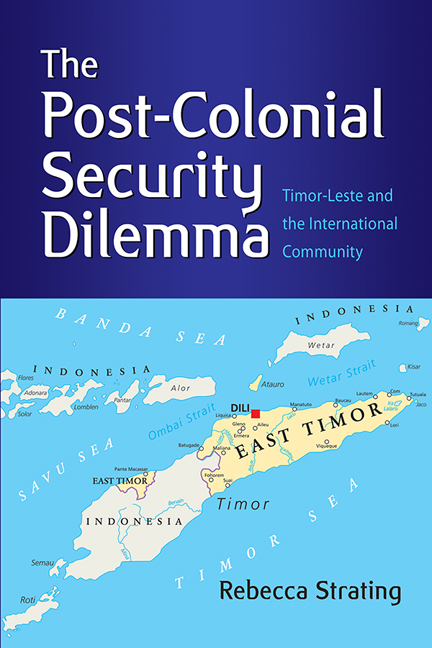Book contents
- Frontmatter
- Contents
- List of Tables
- Acknowledgements
- 1 Introduction
- 2 The Struggle for Recognition: Territorialization, Self-determination and the Imagining of “East Timor”
- 3 The Politics of Recognition: East Timor and the International Community
- 4 Establishing Legitimacy: International State-building in East Timor
- 5 Timor-Leste's Aspirational Foreign Policy
- 6 Identity Hedging: Timor-Leste's Engagement with Intergovernmental Organizations
- 7 Timor-Leste's National Security Agenda
- 8 Securing Economic Sovereignty
- 9 International Reconciliation and Transitional Justice
- 10 Conclusion: Timor-Leste in the Changing Regional Order
- Postscript
- Bibliography
- Index
- About the Author
2 - The Struggle for Recognition: Territorialization, Self-determination and the Imagining of “East Timor”
Published online by Cambridge University Press: 16 May 2019
- Frontmatter
- Contents
- List of Tables
- Acknowledgements
- 1 Introduction
- 2 The Struggle for Recognition: Territorialization, Self-determination and the Imagining of “East Timor”
- 3 The Politics of Recognition: East Timor and the International Community
- 4 Establishing Legitimacy: International State-building in East Timor
- 5 Timor-Leste's Aspirational Foreign Policy
- 6 Identity Hedging: Timor-Leste's Engagement with Intergovernmental Organizations
- 7 Timor-Leste's National Security Agenda
- 8 Securing Economic Sovereignty
- 9 International Reconciliation and Transitional Justice
- 10 Conclusion: Timor-Leste in the Changing Regional Order
- Postscript
- Bibliography
- Index
- About the Author
Summary
The first section of this book examines the roles of states and the international community in establishing East Timor's sovereign identity. This chapter develops an understanding of how East Timor became “imagined” as a bounded political unit within the international community. The 1933 Montevideo Convention defined a state as an entity that possesses a permanent population, defined territory, government and capacity to enter into relations with other states. “Territorialization” is the act of organizing territory, a process that is integral to the absolute external sovereignty concept. While it is contested in international relations, territorial sovereignty continues to provide the conceptual framework for demarcating those groups that possess rights to political authority in the international community from those that do not. The first stage of East Timor's statehood involved the creation of an internationally recognized territory through the partition of the island of Timor by regional European powers, Portugal and the Netherlands in the nineteenth century. East Timor's status as a bounded territory with a population was established externally; its identity was dependent upon the international community rather than developing through national consciousness shared by the people inhabiting the territory. The territorialization of East Timor is key to understanding how it achieved state sovereignty.
Timor-Leste is part of the Lesser Sundas (Nusatenggara) group of islands situated on the Eastern tip of the Indonesian archipelago. Territorially, it shares the island of Timor with the Indonesian province of West Timor. East Timor's colonial history and borders are relevant to the international recognition of the right of self-determination. The border that splits “East” from “West” Timor is not an organic demarcation, but one driven by international forces, most notably the introduction of European colonialism in the region in the seventeenth century. The East Timorese exclave Oecussi in the Indonesian province of West Timor, for example, reflects historical colonial settlement. This chapter examines the processes by which the territory of East Timor became “imagined” during the era of Portuguese colonialism. It does so by examining the border arrangements and international legal negotiations between the Portuguese and Dutch to divide the island of Timor into “East” and “West”. The contemporary state and national identity of Timor-Leste owes its existence to European colonialism and international law. Bounded territory provided the physical and social space for “imagining” the East Timorese political community.
- Type
- Chapter
- Information
- The Post-Colonial Security DilemmaTimor-Leste and the International Community, pp. 35 - 58Publisher: ISEAS–Yusof Ishak InstitutePrint publication year: 2018

